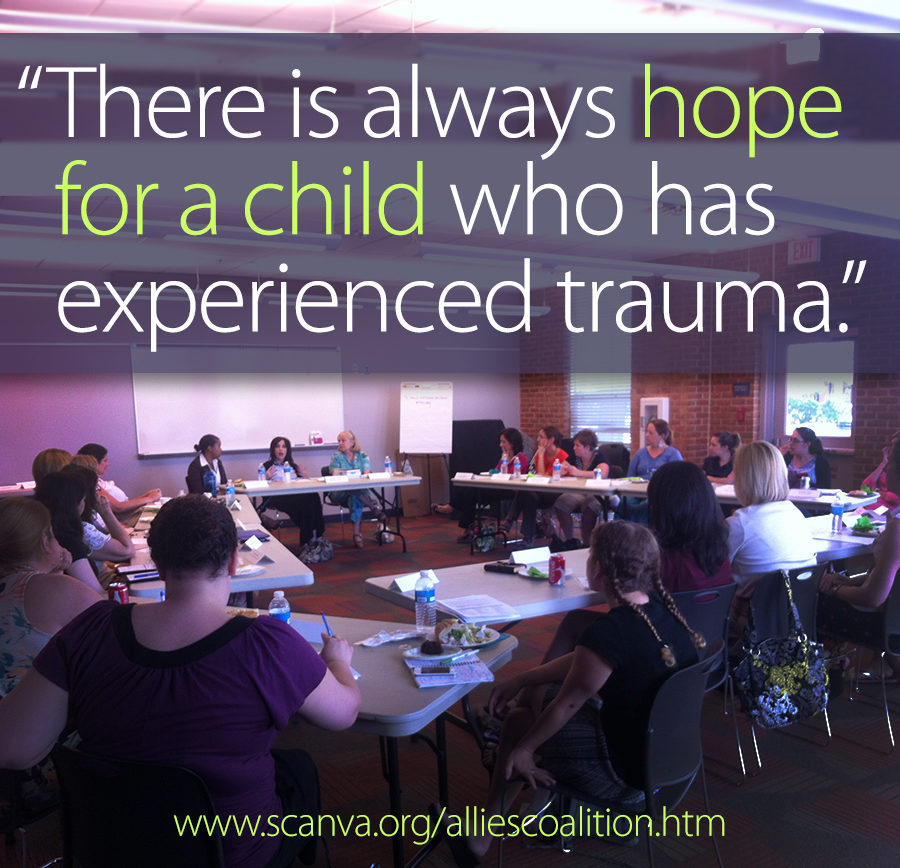June 21, 2013
Imagine a preschool child who has great fun on the school playground but every time he hears the teacher say it is time to go back inside, he tends to go the other direction. He’s hard to “corral” back into the building and then has trouble concentrating or focusing on the next activity. His teachers get frustrated because they see this as “acting out” and “being difficult” and they even wonder about ADHD…
But what if you also knew this little boy had been sexually abused; that even though he’s now in a safe home environment, there’s something about that hallway back into the classroom and the way the lighting changes that reminds him viscerally of the traumas he endured at such a young age. He’s too young to understand that connection but his body language and behaviors communicate for him.
- How does knowing this additional information change your advice for those involved? Anxiety, behavior problems, concentration problems, interpersonal conflicts and physical symptoms like stomachaches can be symptoms caused by trauma.
- Is there a better way to respond to this vulnerable child? Absolutely. The move toward trauma-informed practice is designed to help us think differently about how we address, treat and interact with children – and with parents who may have suffered trauma themselves during childhood.
 SCAN of Northern Virginia’s Allies in Prevention Coalition recently met to learn more about trauma-informed practice and how professionals working with children and families can use an awareness of the signs and consequences of trauma to more effectively address the needs of children and families with whom we work.
SCAN of Northern Virginia’s Allies in Prevention Coalition recently met to learn more about trauma-informed practice and how professionals working with children and families can use an awareness of the signs and consequences of trauma to more effectively address the needs of children and families with whom we work.
“There is always hope,” said Cynthia Agbayani, a panelist at the meeting from Lifeworks Outreach Services in Woodbridge. “We want to talk to children in terms of being survivors and heroes instead of victims.” Trauma-informed practice can help. With trauma-informed practice, practitioners infuse trauma awareness, knowledge, and skills into their work with children and families. They work collaboratively, using the best available science, to screen and treat children and help them develop resiliency.
Many jurisdictions now have trauma screenings for children in the child welfare system and use evidence-based or promising interventions, such as Trauma-Focused Cognitive-Behavioral Therapy (TF-CBT). TF-CBT adapts traditional cognitive behavioral therapy to be trauma-sensitive for children with Post Traumatic Stress Disorder (PTSD) or other problems related to traumatic life experiences, as well as their parents. Children and parents work to develop skills for processing the trauma; managing distressing thoughts, feelings, and behaviors; and enhancing safety, parenting skills, and family communication.
Trauma-informed practice is not just about therapy – it’s a change in the way we think about behavior and the survivor’s need for healing, safety and support. “You want to demonstrate this practice and engage parents to model it as well,” said Ann Knefel, with Fairfax County DFS, who also participated on the panel. CASA volunteers, caregivers, social workers, lawyers, therapists and others each have a role to play in ensuring children have access to trauma-informed care. To learn more about the principles of trauma-informed care, visit some of these resources:
- The National Center for Trauma Informed Care with SAMHSA (Substance Abuse and Mental Health Services Administration)
- The book Trauma Through a Child’s Eyes: Awakening the Ordinary Miracle of Healing by Peter A. Levine, Maggie Kline
- The online resource center on Treatment and Trauma Informed Care from the Child Welfare Information Gateway
